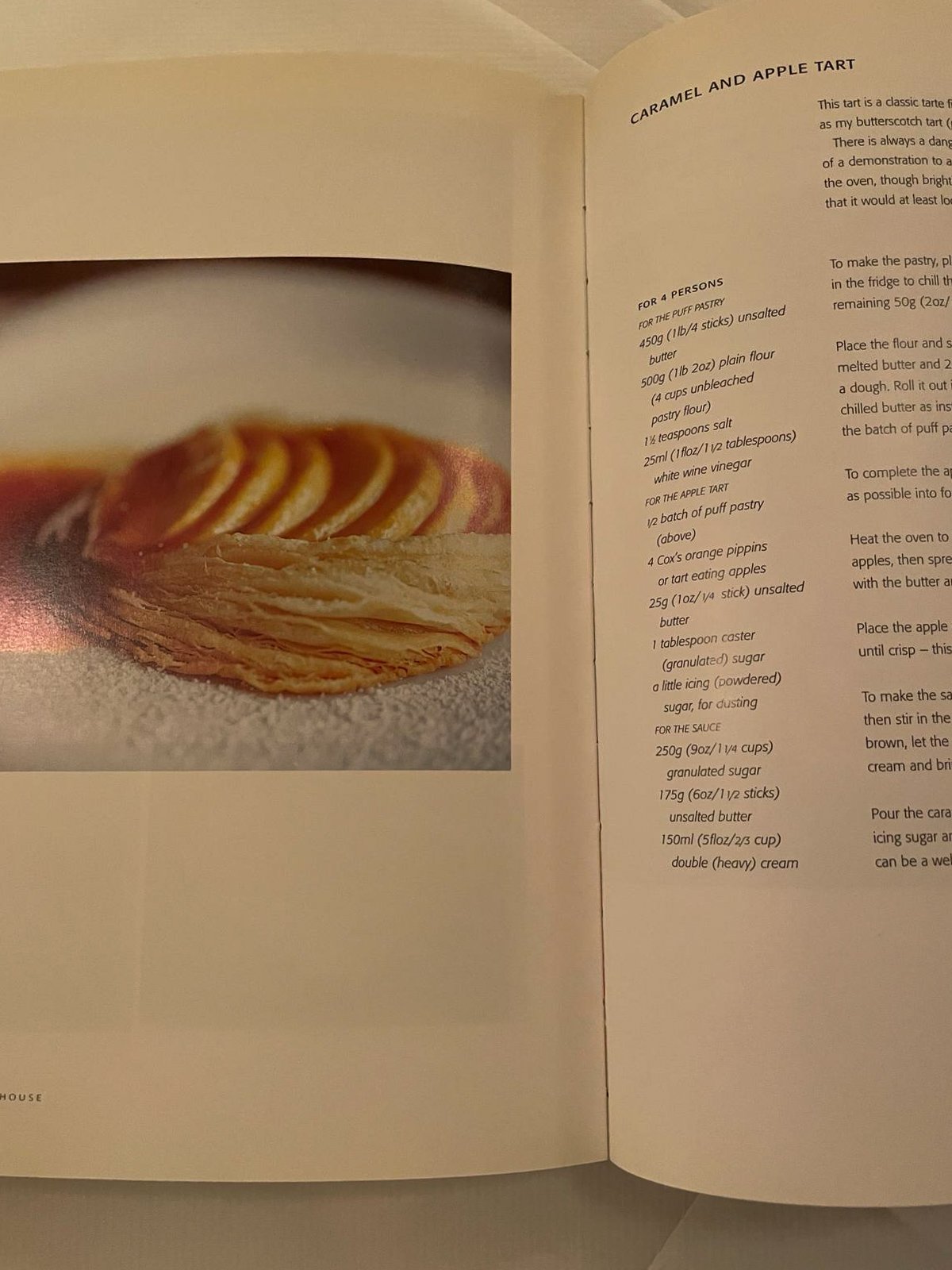This book is not only one of my favourites to flick through for inspiration, but it’s also a favourite escape for Mrs Chef and me. The Star Inn at Harome in North Yorkshire is one of the most beautiful parts of the country.
The thatched roof is the colour of the stonework on the cottages, the people are friendly, and the countryside is jaw-droopingly spectacular. Driving from the A1, before you get to the moors, you climb Sutton Bank (with the white horse), and suddenly it feels as if time has stood still. Everything is relaxed, the signs are written in local dialect (mud on’t road), and the local hospitality is excellent.
We’ve been visiting for many years and it has such charm. The book offers a slice of Andrew Pern’s masterpiece—The Star. It’s essentially a country pub dating back to the 14th century; a place for monks to rest between York from Whitby.
Sadly, there was a disastrous fire there a few years ago, gutting the old parts of the property. Thankfully, most of the Mouseman furniture survived and the place has since re-opened and is busy again. The book, Black Pudding & Foie Gras, is a great way to understand Andrew’s vision. He’s is a well-known character, respected by many great chefs and is hopefully going to continue there for a long time to come.
Andrew takes you on a tour of his turf, gets you under his spell, and carries you through hill, dale and rugged coastline to taste the bounty of the Yorkshire landscape. He also gives a nod to his suppliers, growers, breeders and artisans, showing he respects where food comes from. It’s a beautifully put together book, crammed full of stories, and covered in velvet!
I love this place, it’s so very special to us. Yes, it has a Michelin star, but it still serves proper Yorkshire portions. We sometimes dream of living in the village, as The Star would be on our doorstep. It is that good.
If you do eat there, you must try his signature dish of black pudding, foie gras, Pickering watercress and scrumpy syrup. It’s a masterpiece of flavour and texture.
This is a posh book, one of those coffee table books we hear of, but it is a good un, right proper Yorkshire, (said in a local Yorkshire accent).











































